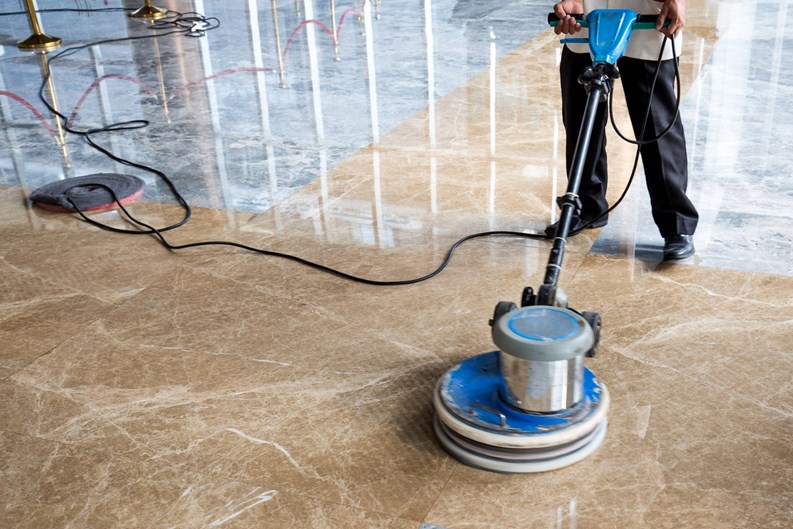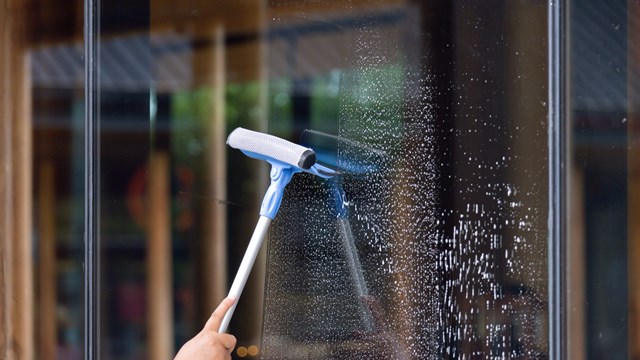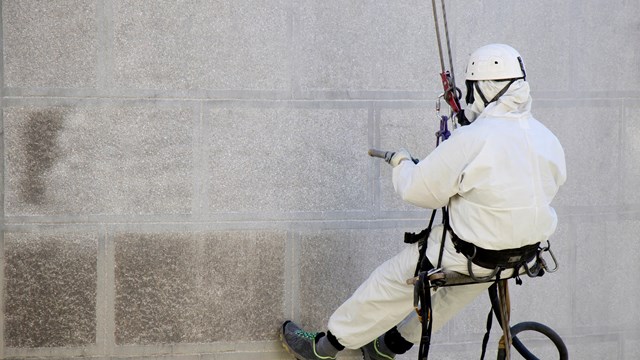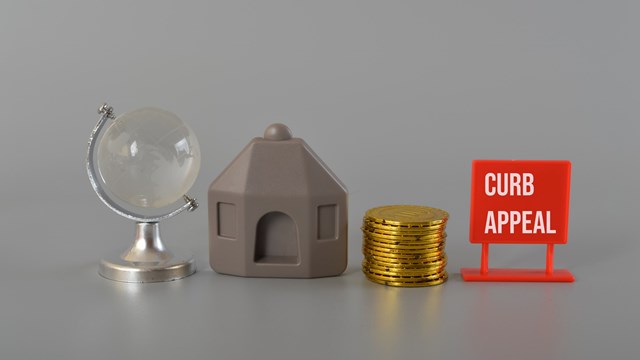As the days get longer, warmer, and more full of outdoor activity, multifamily boards and property managers must consider a whole new list of maintenance and preparation tasks to ready their buildings for the approaching summer. It’s finally time to put the snow melt and shovels away; bring out the lawn chairs, pool umbrellas, and a lot more window cleaner to maximize enjoyment of those precious sunny days!
Making the most of your property’s visual appeal is especially important in these months of heightened foot traffic, a brisker real estate market, and residents taking advantage of their building’s or community’s amenities al fresco. All of this can contribute to a property’s broader appeal and value—so investing time, labor, and funds into sprucing up the place each spring is bound to pay dividends.
Play It Safe
The first order of business for any building or property undertaking a spring sprucing is to conduct an inspection for items that could affect safety or structural integrity. Alan Bressler, chief operating officer and principal of Guardian Service Industries, Inc., a facility services company based in New York with client communities throughout the Northeast, New England, and the Mid-Atlantic, suggests choosing a starting point—either the roof or the cellar—and working through to the other end thoroughly and methodically. “Check pipes, fittings, structure, seals, and so forth for any damage, leaks, cracks, etc., and notify any vendors you may need with your repair lists,” he says.
According to Brian Butler, CMCA, CAM, PCAM, senior vice president—high rise at FirstService Residential Illinois, roofs are the natural place to start these inspections, since they are particularly vulnerable to the elements. He explains that in Chicago, which is known for its particularly long and rough winters, snow on a roof will start to melt from the heat of the building, but then freeze again as it moves outward, causing ice ridges to form at the roof’s edge. Known as ‘ice damming,’ this condition causes the melting snow to pool and prevents it from draining, leading to leaks and other problems when the weather starts to warm.
The harsh winter season takes its toll on ground-level outdoor elements of a property as well, particularly sidewalks, pavement, asphalt, and sports courts or pool decks. Neil Betoff, president of STAR Building Services in Shrewsbury, New Jersey, suggests that managers and supers pay particular attention to these areas as they conduct their walk-throughs. “Look for cracking and problems with sidewalks, parking-lot alligatoring [a condition where a series of cracks appear in one area of pavement that often intersect and crisscross in a scaly pattern], potholes, and damaged curbs from snow removal plows,” he says. “Also look for cracks on the building exterior—rain or melting snow can settle into the cracks and then, at night when it freezes, it expands.” He goes on to say that mortar, caulking, and sealants should all be inspected for cracks.
Each of these pros says that buildings in their area can get a substantial amount of damage each year from snow, ice, wind, as well as the methods and materials used to combat them like salt, shovels, plows. Even car exhaust from all the extra idling drivers do when warming up their vehicles can build up into a layer of grime on bricks and siding. Addressing the structural elements first is paramount for safety and integrity, but also serves to keep exterior surfaces looking their best for the warmer months ahead.
Cleaning Up Outside
With more serious external concerns addressed, façades and sidewalks can now be assessed for their deep-cleaning needs. Both urban and suburban environments wreak havoc on a building’s or property’s exterior throughout the winter, explains Reggie Thomas, director of community management for Evergreen Management Group based in Newtown, Massachusetts. And communities in coastal areas contend with the effects of salt and sand on their exteriors.
“[Urban] buildings get hit hard with construction debris, black algae, and general air pollutants.” says Thomas. “Suburban buildings see green algae from trees—especially on the shady sides of buildings, where it will typically advance more quickly.” As for buildings on the coast, “Ocean salt won’t typically reveal itself as much on the façade as it does on glass,” he continues, “but it’s still something to consider. There are some exterior finish products—inferior types of cement board, for example—that are more susceptible to salt exposure and can lead to peeling paint or advanced deterioration of that underlying material.”
“To address these issues,” says Marcello Tronci, senior structural engineer and New York office director at CTLGroup, an engineering, architecture, and materials science consulting and testing firm with offices in both New York and Chicago, “professional façade cleaners typically use a variety of products and methods to keep a façade looking its best. For removing dirt, dust, and grime, professional cleaners may use a low-pressure power washer. For tougher stains and discoloration, cleaners will use specialized cleaning agents and solvents. These solvents come in a variety of forms, including foams, gels, and liquids, and are designed to be safe for the materials of the façade. For more stubborn stains, professional cleaners may use abrasive techniques like sandblasting, media blasting, and pressure washing. Depending on the severity of the damage, professional cleaners may also use specialized techniques like graffiti removal and stucco cleaning.
“The most common water-based cleaning method by far is pressure washing, in which a low- to medium-pressure spray (100-400 psi) is applied to the surface of the building,” he continues. Chemical cleaners “may be sprayed or brushed on a wet surface and then rinsed off with water after completion. Before water is applied, these chemical components need to sit on the surface for a certain period of time, depending on their composition and the material or dirt being removed. In general, we don’t recommend abrasive treatments like grinding, sanding, and blasting. The risk associated with removal of the base material particles along with dirt and paint is substantial, and therefore considered potentially damaging to the façade.”
Thomas adds that “It’s always best to use cleaning products and methods that are surface-specific for different buildings. For softer types of stone, you want to use a low-pressure, green-friendly product that will lift the dirt and staining out of the surface, then pressure washers as a rinsing tool. Brick and stone buildings are very porous, so the right product helps open up those pores. When we have a question, we consult with our vendors and manufacturing reps regarding the best method to use for specific surface types. Vendors provide test samples prior to applying their product, to ensure there are no bad outcomes. There’s no one-size-fits-all when cleaning buildings; brick, granite, and concrete can handle more pressure, but product knowledge is always key to maximizing results.”
In addition to the surface elements, appurtenances like gutters, awnings, fencing, benches, water spouts, flower beds, and eaves also need to be cleared out and spruced up when the seasons change. Accumulation of leaves and branches; snow and ice; soot, grime, and even water staining can make these components not only look worn and tired, but also not function for their intended purpose. While power washing and chemical treatments generally should be done by professional vendors, in-house staff and even a garden or grounds committee can handle some of the “detailing” of these smaller, ground-level areas—although anything involving a ladder should be delegated to staff or hired professionals who are properly insured.
Cleaning Up Inside
Now that the property’s exterior is safe, clean, and pretty, attention can be paid to the interior spaces. The first order of business, say the pros, is floors, including floor coverings: the rugs, carpets, and mats that take a beating in order to protect those underlying surfaces from serious damage and deterioration. “Salt, slush, ice, and dirt have been pounded into your floors for the last several months,” notes Bressler. “Schedule them for a deep cleaning. Inspect your floor mats and replace any that have outlived their usefulness. Strip and wax, shampoo—do what you have to do—but get those floors cleaned,” he urges.
The pros note that the floor cleaning shouldn’t stop at the lobbies. While they might get the most wear and tear—and the most visibility—the dirt, debris, and dampness from more inclement months have made their way into common spaces like club houses, amenity rooms, basements, storage areas, and parking facilities as well. Those areas also need to be cleaned and inspected for the season, with special attention paid to those that were either highly trafficked or completely closed during the winter months, such as a pool house. (Nothing says “welcome to summer” like a passel of opossums nesting in a locker.)
When getting everything to look its cleanest, brightest, and liveliest on a property, attention should be paid to protecting vulnerable areas and making choices for “sprucing” that are easy to maintain. Planting a new flower bed? Consider a (cute) fence or divider to keep it from being trampled. Giving the windows an extra wash? Don’t forget the blinds, valences, or other window treatments that get just as dirty. Washing windows, pruning bushes and trees, cleaning light fixtures and globes, repainting, and freshening lobby plants and art will also go a long way toward welcoming the arrival of spring—as well as residents returning from winter abodes and prospective purchasers using the fair weather to conduct their home search.
One more piece of advice: prepare for that extra foot traffic that comes with warmer months—especially of people who might be checking under the hood, so to speak. “Spring is usually busy for people moving in and out of properties,” advises Butler, “so association staff should prepare heavily trafficked service areas by installing fresh corner guards and ensuring that elevator pads are in good condition to better protect the cabs. These steps can save thousands of dollars in repairs after the moving season is over.” They might also help to sell any listed units faster, for more money, or both.
Darcey Gerstein is Associate Editor and a Staff Writer for CooperatorNews.










Leave a Comment